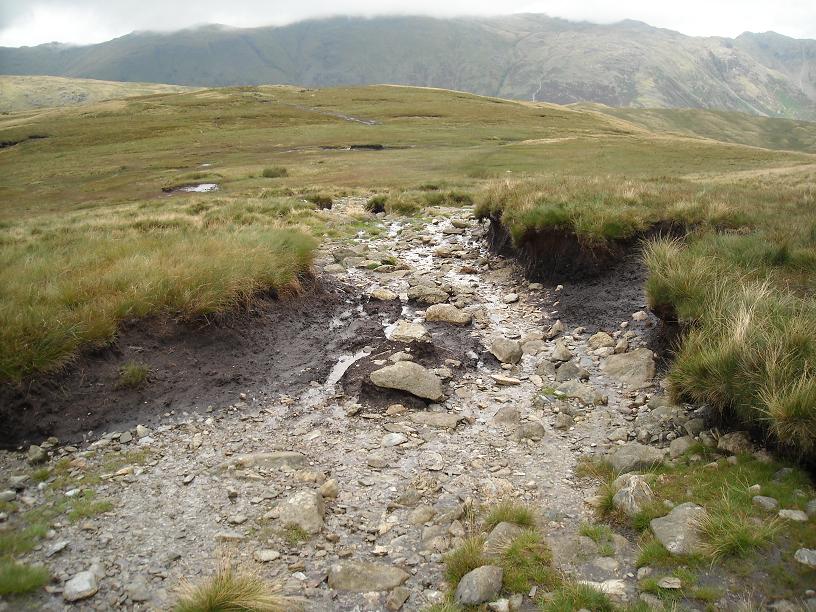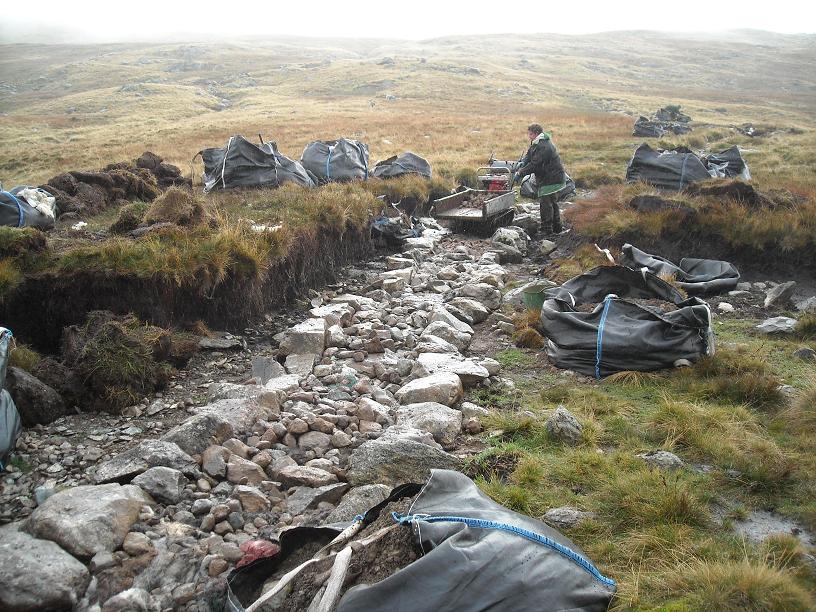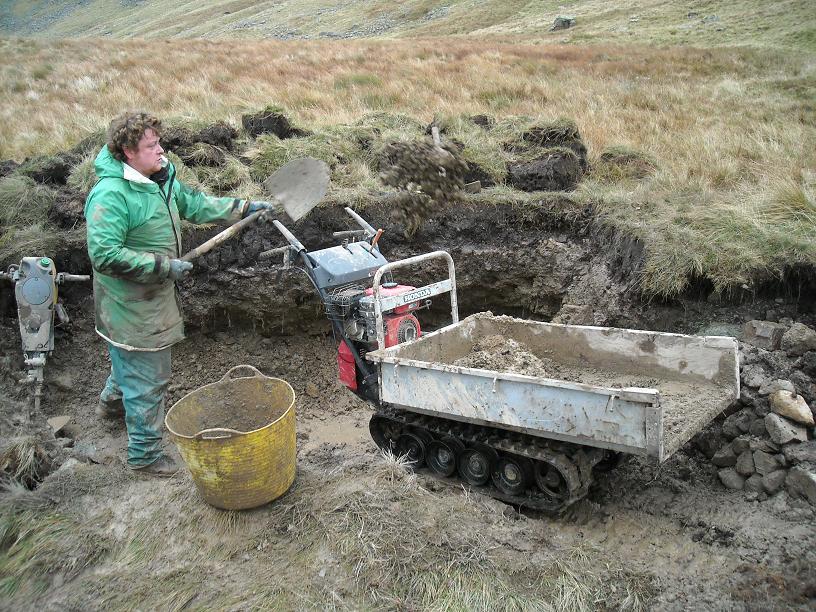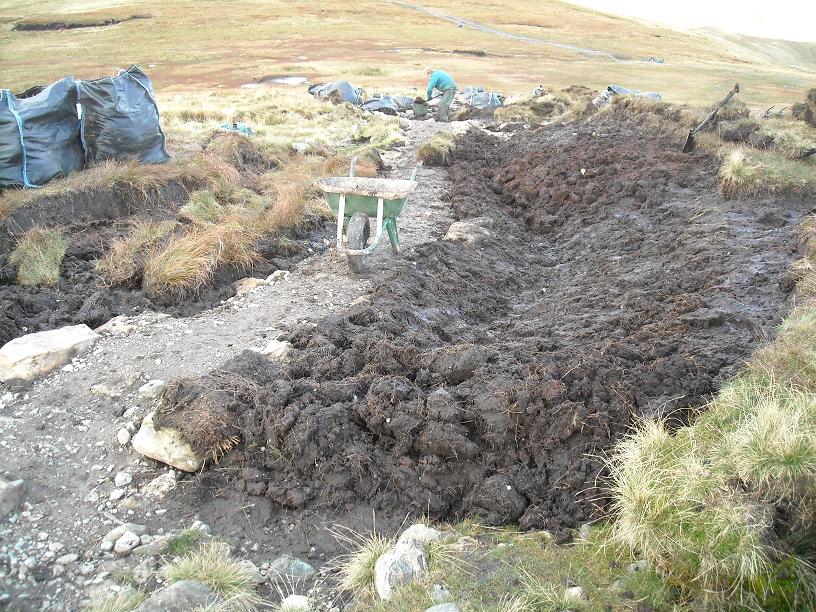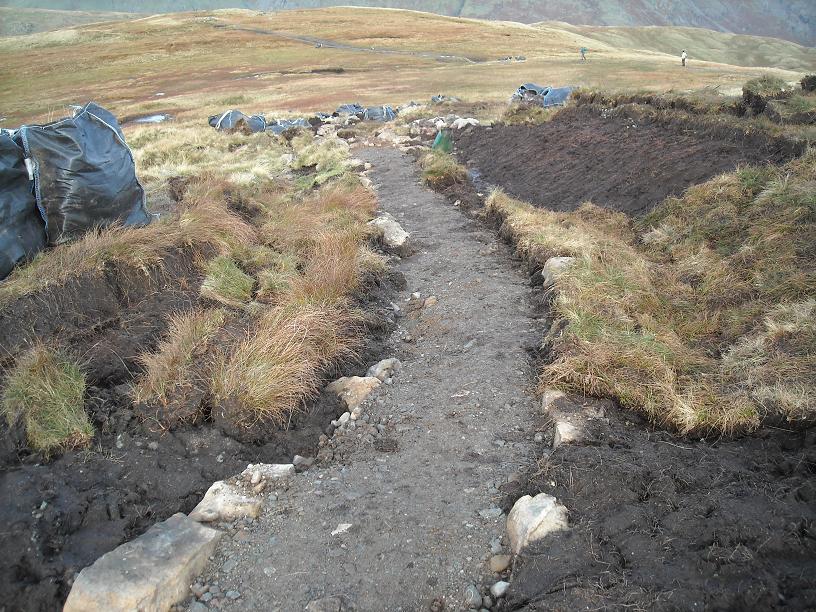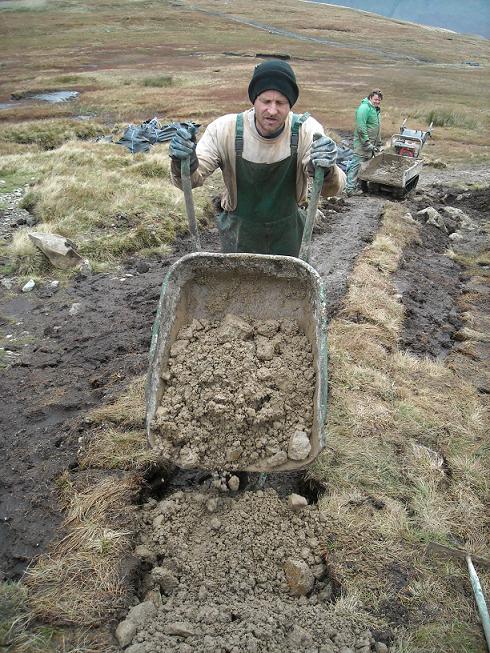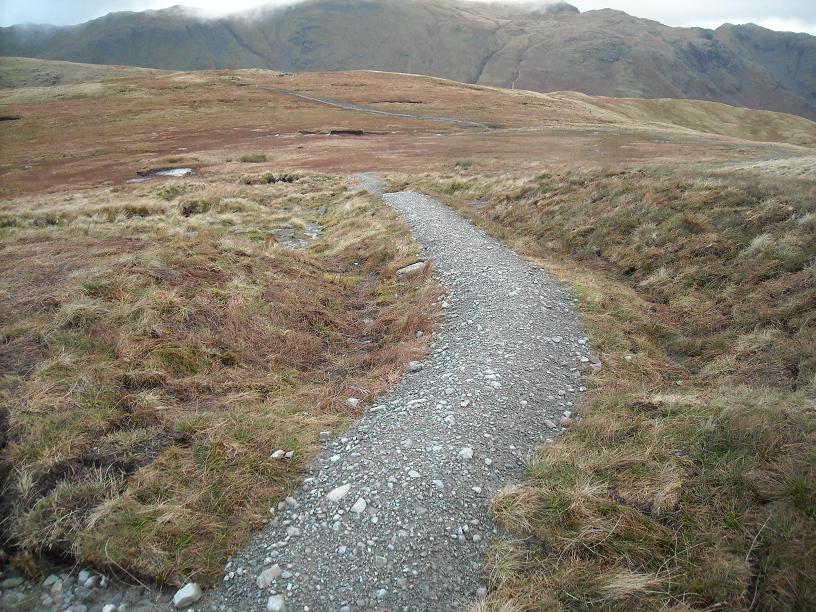

Mt. Rosea Staircase - First Stage
|
Protecting an Internationally Important Archaeological Site A section of path passing through peat bog on Mart Crag Moor had formed a large erosion scar due to inadequate drainage. Consequently this exposed a previously unknown neolithic axe manufaturing site associated with the nearby Langdale Axe Factory. Eighty percent of all prehistoric stone tools found in Britain originate from this area and material from here has also been found at several sites in mainland Europe - testifiy to its international significance. The Coniston footpath crew were given the task of building a causeway over the factory to ensure it's preservation. After careful consideration the crew decided this would best be achieved by landscaping the surrounding peat and turf and bringing in aggregate material for the tread. |
|
|
|
|
| Stone Laying. Stones are laid to support the causeway of aggregate and peat. |
|
|
|
|
| Borrow Pit. Aggregate for the causeway is obtained from a borrow pit which will later be landscaped and covered in turf. |
|
|
|
|
| Peat Shaping. The turf is removed from the surrounding area so that the underlying peat can be landscaped. |
|
|
|
|
| Turf Laying. Once the peat has been landscaped, the turf can be relaid. |
|
|
|
|
| Aggregate. With the turf laid out, the final capping layer of aggegate can be put in place. |
|
|
|
|
| Completed Causeway. With the turf, peat and aggregate in place, the original erosion scar has been replaced by a well drained, long lasting section of path, while also protecting one of Britain's archaeological treasures. |
|
|
|
|

